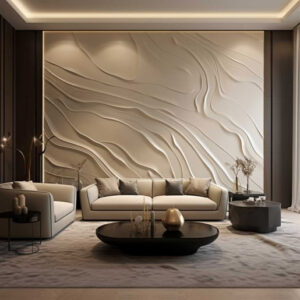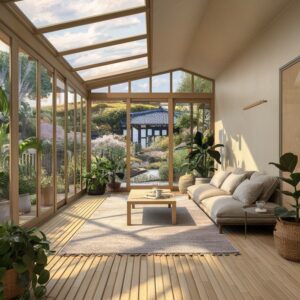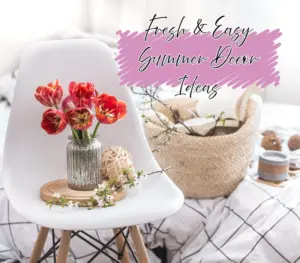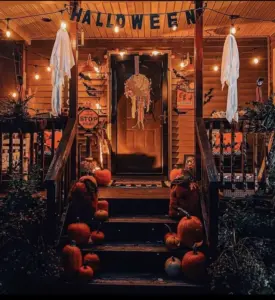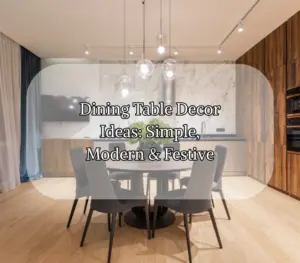
In today’s fast-paced urban world, small apartments have become a common living choice for many. With rising real estate prices and the trend toward minimalist lifestyles, modern interior design for small apartments has emerged as a creative solution to maximize space without sacrificing style or functionality. This article explores innovative strategies, practical tips, and aesthetic inspirations to transform compact living spaces into stylish, efficient, and comfortable homes.
The Essence of Modern Interior Design for Small Apartments
Modern interior design for small apartments focuses on simplicity, clean lines, and functionality while maintaining a sophisticated aesthetic. The philosophy revolves around making every square inch count, blending form with purpose. Unlike traditional designs that may overwhelm small spaces with heavy furniture or ornate details, modern design emphasizes open layouts, neutral color palettes, and multi-purpose elements.
The key principles include:
- Minimalism: Decluttered spaces with only essential items to create a sense of calm.
- Versatility: Furniture and decor that serve multiple purposes to save space.
- Light and Airiness: Using natural light and reflective surfaces to make rooms feel larger.
- Smart Storage: Creative solutions to keep belongings organized without crowding the space.
Planning Your Small Apartment Layout
Before diving into decor, planning the layout is critical in modern interior design for small apartments. Start by assessing the space’s dimensions and identifying its strengths, such as large windows or high ceilings, and weaknesses, like awkward corners or limited floor space.
Read More: decoradhouse upgrade tips by decoratoradvice
Open-Plan Living
An open-plan layout is a hallmark of modern design, especially in small apartments. Combining the living, dining, and kitchen areas into one cohesive space eliminates unnecessary walls, creating a sense of flow. Use rugs or furniture placement to define zones without obstructing the openness. For example, a sleek sofa can separate the living area from a compact dining table.
Zoning with Purpose
If complete openness isn’t feasible, consider zoning with lightweight partitions like glass panels or open shelving. These maintain visibility while adding subtle boundaries. In modern interior design for small apartments, zoning helps maintain functionality without compromising the airy feel.
Color Schemes and Lighting
Color and lighting play pivotal roles in making small spaces appear larger and more inviting.
Neutral and Monochromatic Palettes
Neutral tones like whites, grays, and beiges are staples in modern interior design for small apartments. They reflect light, making rooms feel spacious. A monochromatic palette with varying shades of one color adds depth without overwhelming the space. For instance, a white base with gray accents and wooden textures creates warmth and sophistication.
Pops of Color
While neutrals dominate, strategic pops of color can add personality. Think of a mustard yellow throw pillow or a teal accent wall in a small nook. Keep these accents minimal to avoid visual clutter.
Maximizing Natural Light
Natural light is a small apartment’s best friend. Avoid heavy curtains; instead, opt for sheer blinds or lightweight fabrics that let light filter through. Mirrors are another game-changer in modern interior design for small apartments. Placing a large mirror opposite a window reflects light and visually doubles the space.
Artificial Lighting
Layered lighting—ambient, task, and accent—enhances functionality and mood. Recessed ceiling lights save space, while sleek floor lamps or wall sconces add style without cluttering surfaces. Pendant lights over a dining area can serve as a focal point, embodying modern elegance.
Furniture Selection: Form Meets Function
Choosing the right furniture is crucial in modern interior design for small apartments. Bulky pieces can overwhelm, so prioritize sleek, multi-functional items.
Multi-Purpose Furniture
Invest in furniture that doubles as storage or serves multiple roles. A sofa bed is perfect for guests, while an ottoman with hidden storage can act as a coffee table or extra seating. Foldable dining tables or wall-mounted desks are ideal for compact spaces, offering flexibility without permanent commitment.
Scale and Proportion
Select furniture that matches the apartment’s scale. A low-profile sofa or armless chairs maintain openness, while slim-legged tables create an airy feel. In modern interior design for small apartments, less is often more—fewer pieces with clean lines trump oversized collections.
Modular Designs
Modular furniture, like sectional sofas that can be rearranged or shelving units that adapt to different layouts, offers versatility. These pieces evolve with your needs, making them perfect for dynamic small spaces.
Smart Storage Solutions
Clutter is the enemy of small apartments, but modern interior design for small apartments tackles this with creative storage.
Vertical Storage
Walls are underutilized assets. Install floating shelves or tall, narrow bookcases to store books, plants, or decor without eating floor space. Pegboards in kitchens or workspaces keep tools accessible yet organized.
Built-In Solutions
Custom built-ins, like under-bed storage or window-seat cabinets, maximize every inch. While they may require an upfront investment, they’re game-changers for long-term organization.
Hidden Storage
Furniture with concealed compartments—like beds with drawers or coffee tables with lift-up tops—keeps belongings out of sight. This aligns with the minimalist ethos of modern interior design for small apartments, where visual calm is paramount.
Decor and Personal Touches
While functionality is key, decor adds soul to a small apartment.
Minimalist Decor
Choose a few statement pieces over many small trinkets. A large piece of abstract art or a sculptural vase draws the eye without cluttering. In modern interior design for small apartments, quality trumps quantity.
Textures and Materials
Mixing textures—like a wool rug, linen cushions, and metallic accents—adds depth. Materials like glass, acrylic, or polished wood reflect light, enhancing spaciousness. For example, a glass coffee table feels less intrusive than a solid wooden one.
Greenery
Plants bring life to small spaces. Opt for low-maintenance varieties like snake plants or pothos, placed on shelves or in hanging planters to save surface space. Greenery aligns with the organic elements often seen in modern interior design for small apartments.
Technology Integration
Modern living demands smart solutions, and modern interior design for small apartments embraces technology seamlessly.
Compact Appliances
In kitchens, compact appliances like slim refrigerators or combination microwave-ovens save space without sacrificing utility. Look for sleek designs that blend with the decor.
Smart Home Features
Smart thermostats, lighting systems, or voice-activated assistants streamline daily tasks. Wall-mounted charging stations or hidden cable organizers maintain the clean aesthetic central to modern design.
Practical Tips for Implementation
To bring these ideas to life, follow these actionable steps:
- Declutter First: Purge unnecessary items to create a blank canvas.
- Measure Twice: Ensure furniture fits the space before purchasing.
- Test Layouts: Use painter’s tape to outline furniture placement before committing.
- Invest Wisely: Spend on multi-functional pieces rather than trendy decor that may date quickly.
- Stay Flexible: Choose adaptable designs to accommodate future needs.
Common Mistakes to Avoid
Even with the best intentions, pitfalls can derail modern interior design for small apartments. Avoid these:
- Overcrowding: Too much furniture or decor shrinks the space.
- Ignoring Scale: Oversized pieces disrupt balance.
- Neglecting Lighting: Poor lighting makes rooms feel cramped.
- Skipping Storage: Without organization, clutter takes over.
More Info: 5starsstocks.com to buy
Inspiration from Real-World Examples
Consider a 400-square-foot studio in New York City transformed with modern interior design for small apartments. A Murphy bed folds away to reveal a spacious living area, while a glass partition separates a compact workspace. Neutral walls with a bold blue accent and mirrored surfaces amplify light, making the space feel twice its size.
Or picture a Tokyo micro-apartment where sliding panels hide storage, and a foldable table serves as both dining and work surface. These examples show how creativity and modern principles can elevate even the tiniest spaces.
Conclusion
Modern interior design for small apartments is about ingenuity and intentionality. By embracing minimalism, multi-functional furniture, smart storage, and strategic lighting, anyone can turn a compact space into a stylish, functional home. The beauty lies in balancing aesthetics with practicality, ensuring every element serves a purpose while reflecting personal style. Whether you’re in a bustling city or a cozy suburb, these principles empower you to create a sanctuary that feels spacious, modern, and uniquely yours.
Start small—declutter, experiment with layouts, and invest in versatile pieces. With modern interior design for small apartments, limitations become opportunities to innovate and thrive in your urban oasis.
